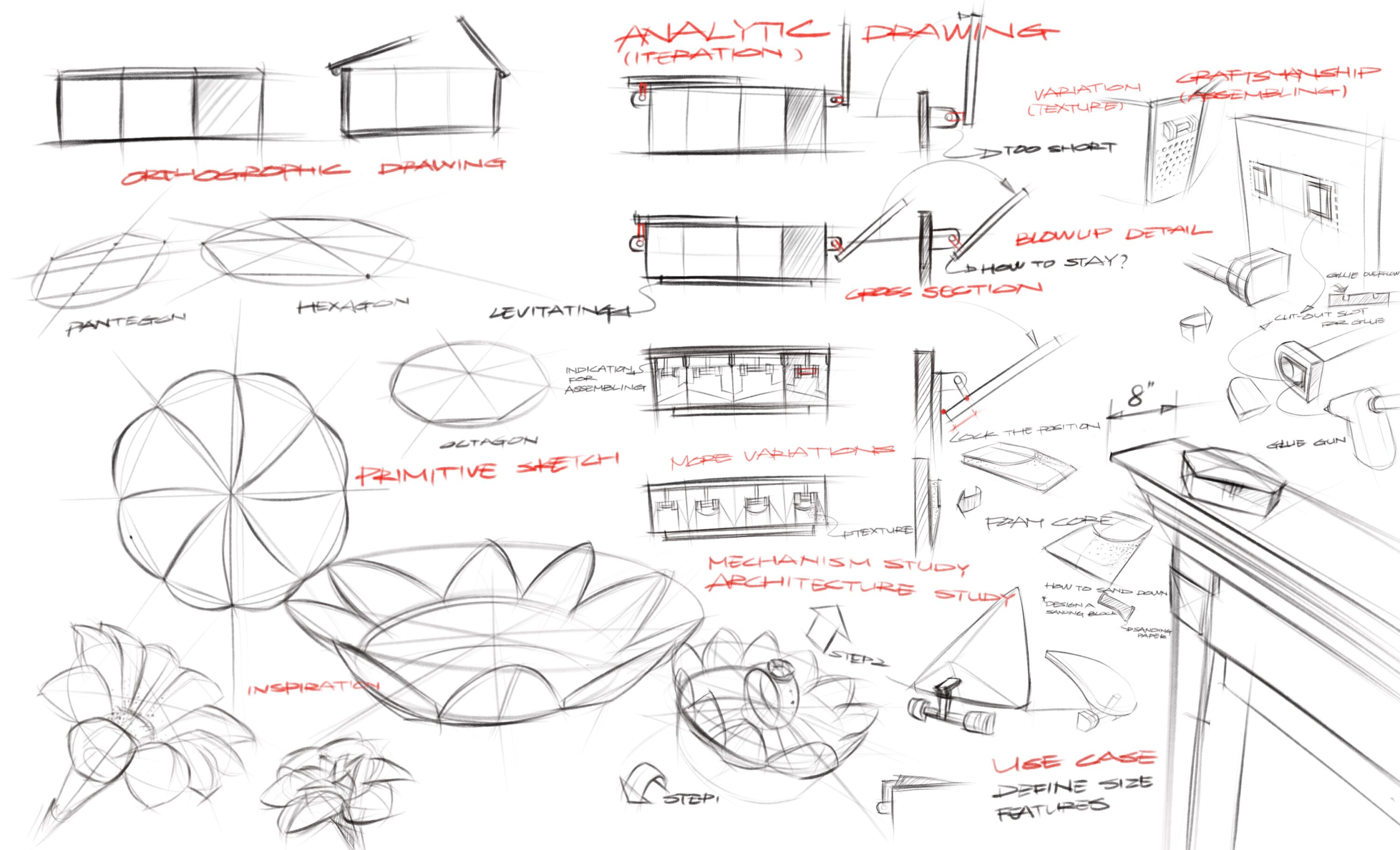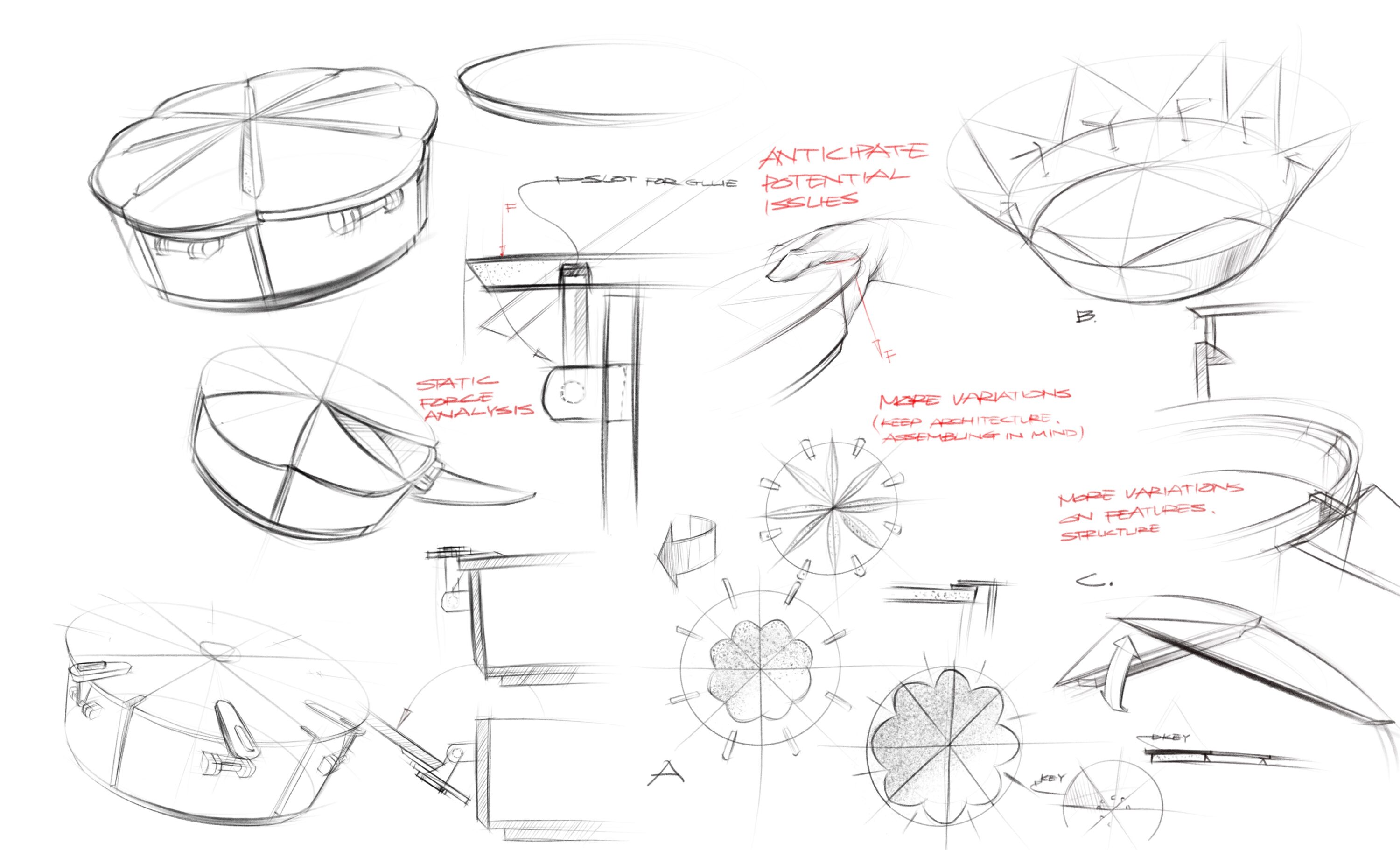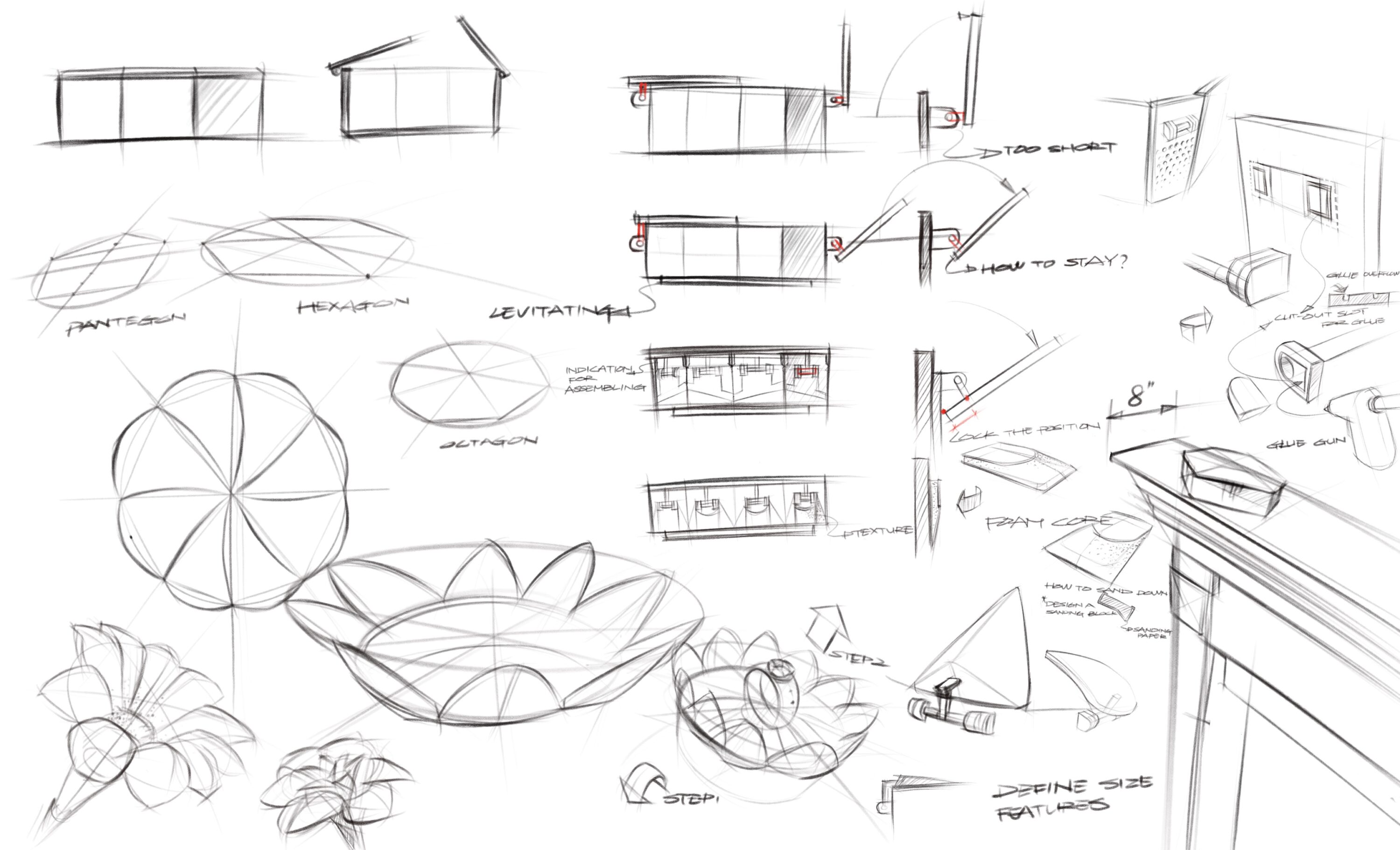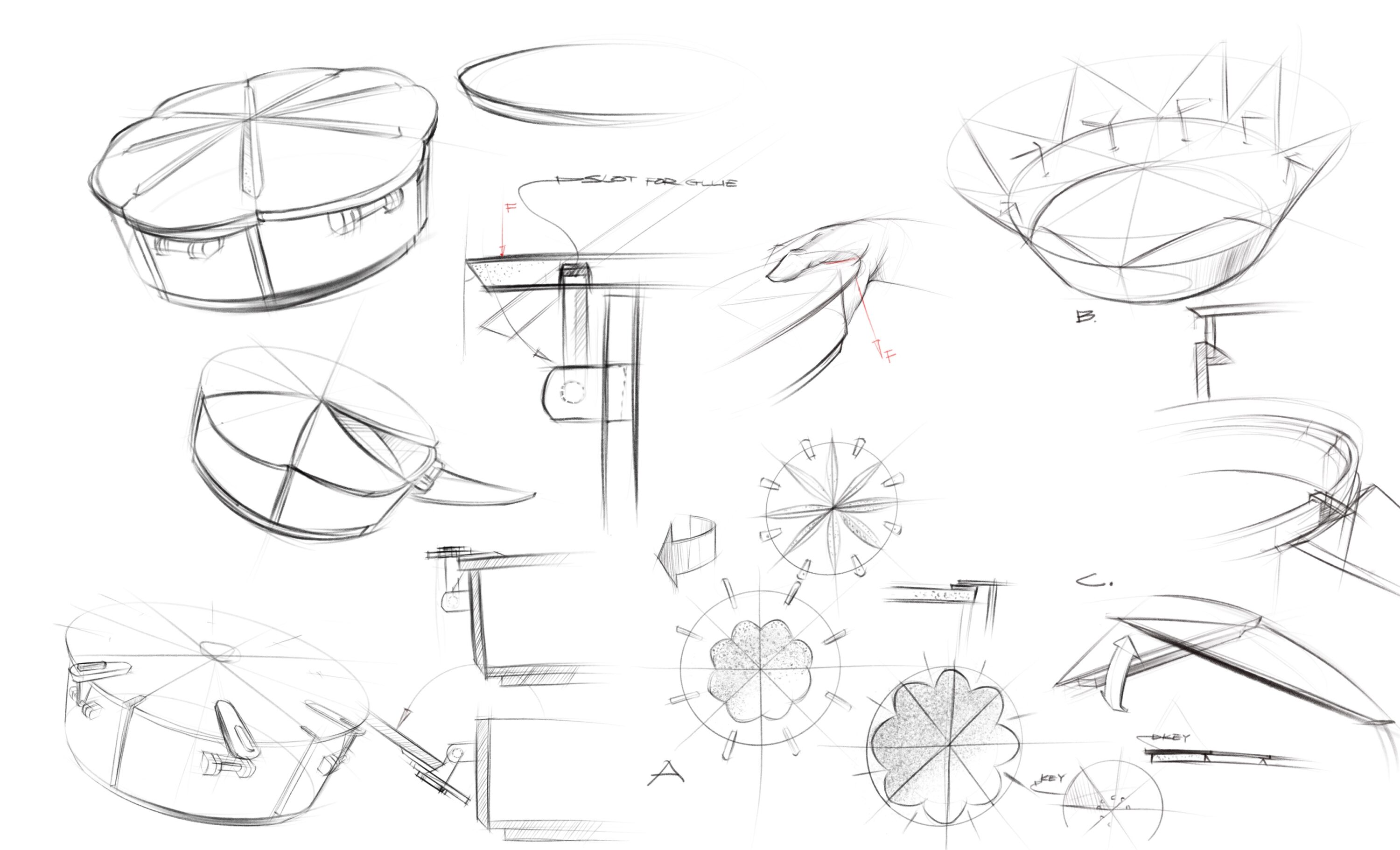Investigative Sketch
Aaron’s Treasure Box
When Aaron showed me his first studio project, I was impressed by the level of craftsmanship (I was not his studio class instructor and not familiar with the prompt, but foam core was the only material he’s allowed to use, meanwhile he was also asked to incorporate a hinge into his design as the prompt stated.)
He made a plan on his sketchbook(on the top left). But when we sit down together and doodled down his thinking process, his design iteration process really demonstrated his ability of complex, sophisticated thinking, with the help of his verbal explanation. Here comes the question – How to use analytical sketches to facilitate this visual deliberation process?
Objective
Visual deliberation is to use visual aids to support deliberative processes such as debate and decision making. By “visual” I mean anything that can be, literally, seen. Mapping out the design iteration process that demonstrates Creativity, Critical Thought, and Logic.
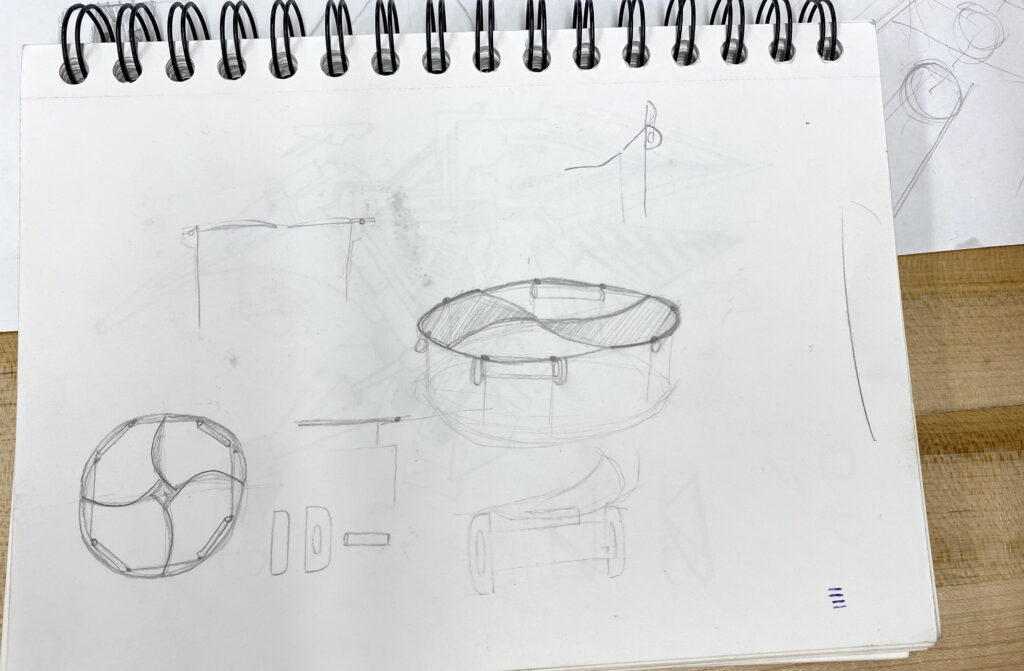
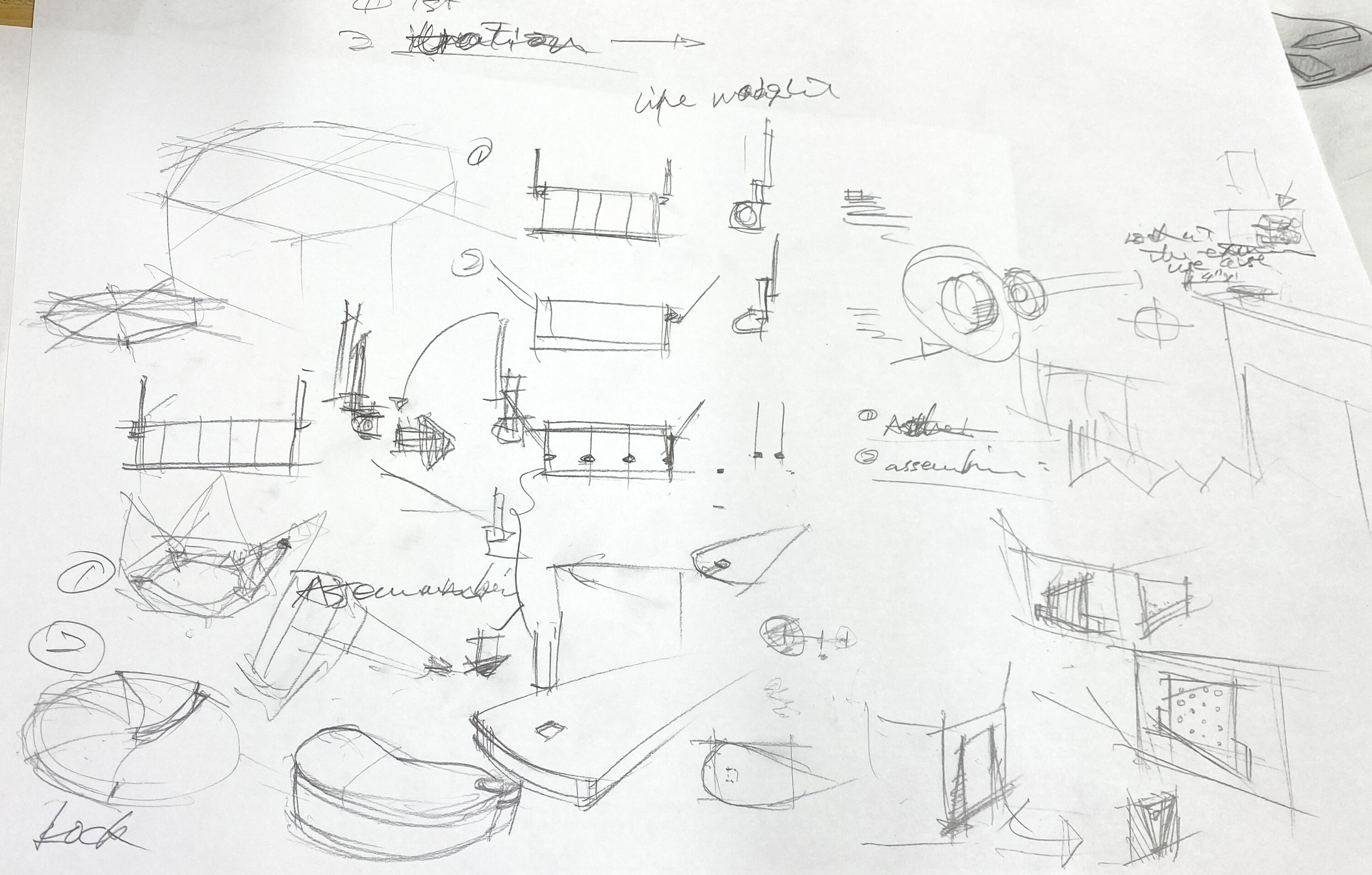
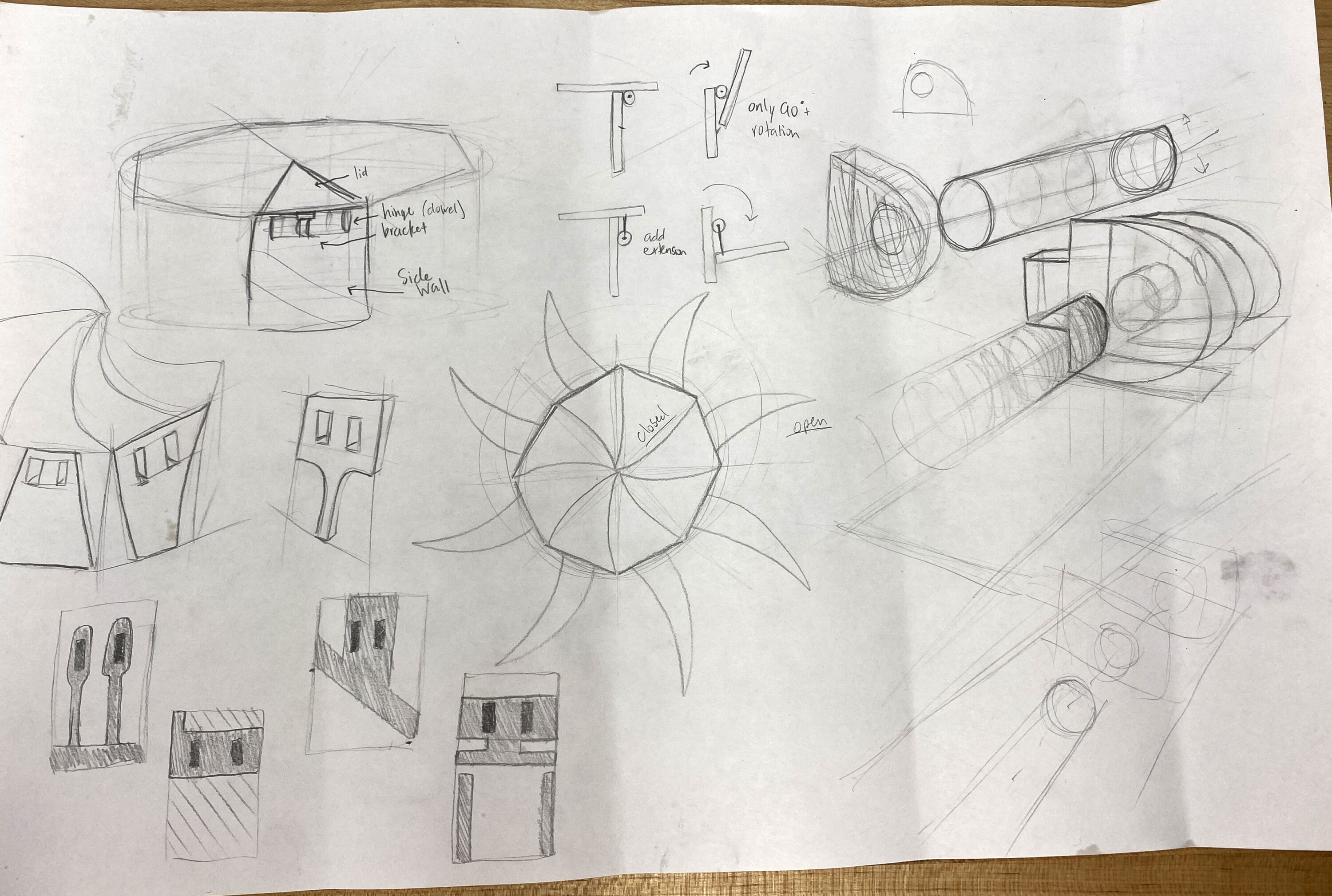
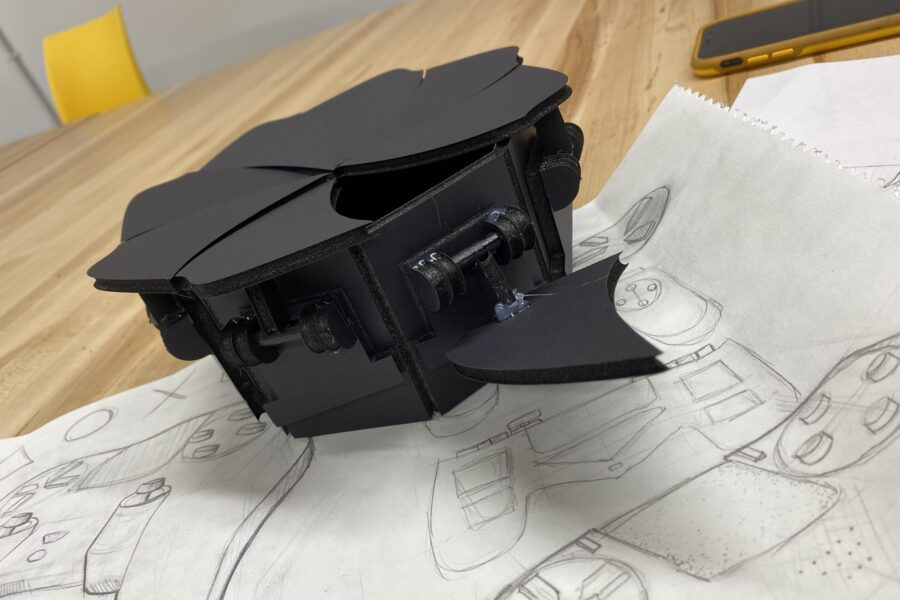
First Year Studio Ideation Sketch Tips
Make A Plan for Visual Deliberation
Process
What to Draw
Note
Preparation
Why do you design this
(Prompt)
Research
▪ Define the major components, list them all, and set priorities.
▪ Highlight the unique feature/ user scenario. What’s the benefit to users? (Draw a storyboard for better communication, or do it after the design is completed)
▪ Where does the inspiration come from? Illustrate briefly to convey the emotion.
Keep the persona in mind, Role-playing and insight development
Make a plan
Think before Doing
Investigative Sketches (Analytic drawing)
▪ Architecture study based on design hypothesis, list all the potential configurations of the internal components.
▪ How to interact – Mechanism study (cross-section)
▪ Orthographic drawing
▪ Diagram
– Ergonomic analysis (proportion, interactions)
— Static or dynamic force analysis to anticipate potential problems.
— Cross-sectional diagram of the design
Keep use case in mind, exhaust all avenues, map out all the possibilities, combinations
Fabrication
Think by Doing
Investigative Sketches (Analytic drawing)
▪ Use analytic drawing again to map out the Iteration process after rough prototyping, illustrate the changes
Explorative Sketches (fleshed-out ideas)
▪ More variations on how to provide the visual cue for the interaction
▪ More variations on features, textures, surfacing
▪ Blowup details
▪ Always keep the use case and universal principles of aesthetics in mind while exploring
Role-playing with rough prototypes to refine the design concept
Craftsmanship
Anticipate Problems and Plan Accordingly
Explore the mutual design benefit
Maintain the aesthetic value while finding a workaround for the fabrication constraints.)
Laser cutter
– Burn marks
– Do you need to make marks for machining or assembling?
– Is there enough clearance between parts?
Water jet cutter (cutting capacity 12”x12”, thickness <0.25”)
– Keep tabs on each piece (due to the gaps on the substrate)
Vacuum forming
– Draft angle
– Design a mold to make undercuts?
–Where is the venting and airflow?
–Is there an alternative plan for the webbing?
–Is there a plan for releasing a mold?
— Is there a plan for trimming, or if there’s Post-fabrication plan
The Strip heater
– Design a mold to keep certain precision?
Lathe
Bandsaw
– Is the orthographic drawing ready?
3D printer
– Capacity of the machine?
— How to define parting lines and where the infill goes?
Assembling
–Do you need to design sanding blocks or fixtures to keep certain precision?
–Do you plan any design details or marks to keep the components aligned properly?
— Does the design have a way to hide the glue marks? What is the plan to apply adhesive on clear acrylic? Does the design consider the surface erosion of epoxy on edge? How about an adhesive dispensing, taped needles?
Understand the properties of the materials,
The safty/cavity/capacity/ of the fabrication machines
Discussion and Future Work
Migrate all the in-depth thinking to the context of mass production.
More design iterations due to the change of material choice, fabrication method, and price point
Go beyond the expectation, repeat the ideation process again
